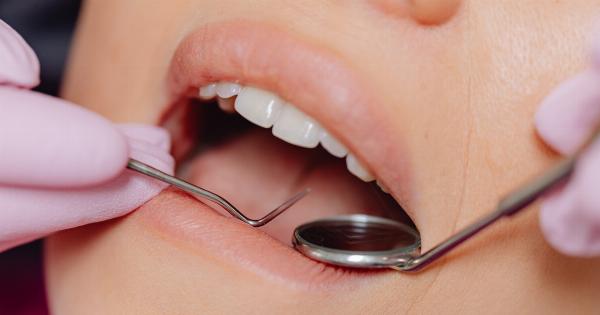Orthodontic care is a specialized field of dentistry that focuses on correcting misalignment and malocclusion of teeth and jaws.
While orthodontic treatment is common among the general population, it can present unique challenges for patients with autism. Autism spectrum disorder (ASD) is a neurodevelopmental disorder that affects communication, social interaction, and behavior, which can impact the ability to undergo dental procedures and comply with treatment.
This article explores the challenges faced by patients with autism in orthodontic care and strategies to navigate these challenges effectively.
The Importance of Orthodontic Care for Patients with Autism
Orthodontic care is essential for patients with autism as it not only improves the appearance of their smile but also enhances their overall oral health.
Misaligned teeth can lead to difficulties in chewing, speaking, and maintaining proper oral hygiene. Additionally, malocclusion can contribute to jaw pain, headaches, and excessive wear on teeth. By addressing these issues, orthodontic treatment can significantly improve the quality of life for individuals with autism.
Challenges Faced by Patients with Autism in Orthodontic Care
Patients with autism often experience sensory sensitivities, anxiety, and difficulty with communication and social interaction. These challenges can make orthodontic care particularly daunting. Some of the key challenges faced by these patients include:.
1. Sensory Sensitivities
Many individuals with autism have heightened sensory sensitivities, which can make dental appointments overwhelming.
The bright lights, loud noises, and unfamiliar sensations associated with orthodontic treatments can trigger anxiety and sensory overload. These sensitivities may make it challenging for patients to tolerate the necessary dental instruments and procedures.
2. Communication and Social Interaction Difficulties
Autism can affect an individual’s ability to communicate effectively and engage in social interactions. This can make it challenging for patients to express their discomfort or understand instructions during orthodontic procedures.
Lack of clear communication can hinder the progress of treatment and may result in misinterpretations or misunderstandings.
3. Anxiety and Fear
Dental anxiety is common among the general population, but it can be even more pronounced in individuals with autism due to their heightened sensitivity to stimuli and difficulties with social interaction.
The fear of the unknown and anticipation of discomfort can further exacerbate anxiety, leading to resistance in attending dental appointments or cooperating during treatment.
4. Sensory-Seeking Behaviors
While some individuals with autism experience sensory sensitivities, others engage in sensory-seeking behaviors. This can involve putting objects in their mouths, biting, or chewing excessively.
These behaviors may interfere with orthodontic treatment and increase the risk of damage to appliances or brackets.
5. Unpredictable Behaviors
Autism is characterized by a range of behaviors that may be unpredictable or challenging for dental professionals to manage. Patients with autism may exhibit difficulties with impulse control, self-regulation, or emotional regulation.
These behaviors can make it challenging to conduct orthodontic procedures safely and effectively.
Navigating the Challenges in Orthodontic Care for Patients with Autism
Despite the challenges associated with orthodontic care for patients with autism, there are several strategies that can help navigate these difficulties effectively.
By implementing the following approaches, dental professionals can improve the experience and outcomes for patients with autism:.
1. Sensory-Friendly Environment
Creating a sensory-friendly environment can help alleviate some of the sensory sensitivities experienced by patients with autism. Dental practices can dim lights, minimize noise levels, and provide weighted blankets or other calming sensory tools.
Additionally, introducing patients to the dental office environment gradually and giving them time to acclimate can also ease anxiety.
2. Social Stories and Visual Supports
Social stories and visual supports are effective tools for individuals with autism to understand and prepare for dental procedures.
These visual aids can include step-by-step instructions, pictures of dental instruments, and explanations of what to expect during a visit. Social stories can help alleviate anxiety and provide a clear understanding of the process, promoting cooperation and compliance.
3. Communication Strategies
Effective communication strategies are crucial to address the difficulties faced by patients with autism. Dental professionals should use clear and concise language, visual aids, and simplified instructions.
Alternative communication methods, such as visual schedules or augmentative and alternative communication (AAC) devices, can also facilitate understanding and improve communication.
4. Desensitization and Gradual Exposure
Gradual exposure to orthodontic procedures and desensitization techniques can help patients with autism become more comfortable over time.
Dental professionals can start by introducing them to the dental office environment, allowing them to explore and familiarize themselves with the equipment. This stepwise approach can gradually build tolerance and reduce anxiety associated with orthodontic care.
5. Collaboration and Training
Collaboration between dental professionals, parents/caregivers, and other healthcare providers involved in the patient’s care is essential.
Sharing information, strategies, and insights can help develop a comprehensive treatment plan tailored to the specific needs of the patient. Dental professionals should also regularly participate in training programs focused on autism awareness and strategies for providing effective orthodontic care for individuals with autism.
Conclusion
Orthodontic care for patients with autism presents unique challenges that require specialized approaches.
By understanding and addressing the sensory sensitivities, communication difficulties, anxiety, and unpredictable behaviors associated with autism, dental professionals can navigate these challenges effectively.
Creating sensory-friendly environments, using visual supports, employing effective communication strategies, gradually exposing patients to procedures, and collaborating with caregivers and healthcare providers are key strategies to provide successful orthodontic care for individuals with autism.































